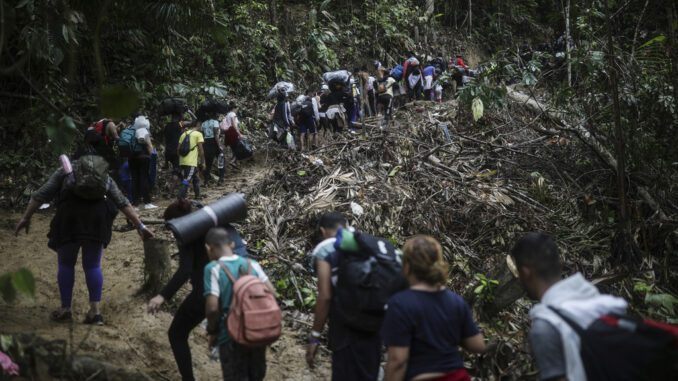

PANAMA CITY — Panama will increase infrastructure in the jungle area along its shared border with Colombia known as the Darien Gap — as well as ramp up deportations — to contain a record-breaking flow of migrants passing through there this year, Panama’s immigration chief said Friday.
National Immigration Authority Director Samira Gozaine said President Laurentino Cortizo had authorized hiring charter flights to increase deportations. Some 350,000 migrants have crossed the dangerous Darien Gap so far this year, shattering last year’s record of fewer than 250,000, which was also a record.
“We will increase these deportations so that the required impact is felt,” Gozaine said.
Security Minister Juan Pino said Panama had tried to manage the flow of migrants responsibly. “If that wasn’t the case we would have many migrants in the streets,” he said. “But we are at the capacity limit.”
Authorities already register and collect biometric data from all of the migrants leaving the Darien as they arrive at small communities in Panama.
Pino said authorities also planned to increase aerial patrols over the remote area as part of their efforts to catch smugglers of migrants, drugs and weapons.
Authorities also said installations would be built in the border areas where migrants will be registered but kept separate from the local communities.
There was no immediate comment from Colombian officials.
Panama will also tighten requirements for some foreigners arriving by air. The country will reduce the maximum tourist stay to 15 days from 90 and require visitors to show they have at least $1,000 available to them, rather than the current $500. Gozaine said it will not apply to all nationalities.
Venezuelans have made up more than half of the migrants entering Panama through the Darien Gap this year. Up until now, Panama has mostly focused on whisking migrants quickly by bus from its border with Colombia to its border with Costa Rica so that they can continue their journey north toward the United States.
In April, the United States, Panama and Colombia agreed to try to crack down on the smuggling rings that bring migrants through the gap.



